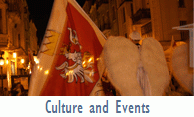|
 Discover the places where Frederic Chopin used to stay. With us you will see a place of his stay in Toruń, you'll see what he admired and what he desrcibed. You will know the taste of the famous Toruń gingerbread, on which he wrote "that the greatest impression was made on me by the gingerbread". We also invite to Szafarnia - manor house, where young Frederic spent the holiday in which today a museum devoted to him is located, and to the famous castle in Golub, which was visited by Chopin as well. Discover the places where Frederic Chopin used to stay. With us you will see a place of his stay in Toruń, you'll see what he admired and what he desrcibed. You will know the taste of the famous Toruń gingerbread, on which he wrote "that the greatest impression was made on me by the gingerbread". We also invite to Szafarnia - manor house, where young Frederic spent the holiday in which today a museum devoted to him is located, and to the famous castle in Golub, which was visited by Chopin as well.The places near Toruń associated with Frederic Chopin  The 2010 is the 200th anniversary of birth of the great Polish composer Frederic Chopin. Polish parliament proclaimed 2010 the Year of Frederic Chopin. The Chopin Year is a great opportunity for the promotion of Poland, its culture and art in Europe and worldwide. The 2010 is the 200th anniversary of birth of the great Polish composer Frederic Chopin. Polish parliament proclaimed 2010 the Year of Frederic Chopin. The Chopin Year is a great opportunity for the promotion of Poland, its culture and art in Europe and worldwide.
However we want to present the Frederick Chopin's associations with Toruń and neighbouring regions: the Dobrzyń and Kuiavia. We want to rediscover and show: palaces and mansions, where he used to stay, places and objects that he visited and described in his letters, the impression that was made on him by the local traditions and heritage.
The young Frederick Chopin stayed in Toruń and the Dobrzyń Land when spending vacations with his friends in Szafarnia in 1824 and 1825. Thence he marched to the nearby villages, where he first encountered the music, rich traditions and rituals of Polish countryside.
The Dobrzyń Land (>>), in which Szafarnia is located, was incorporated in 1815 to the Kingdom of the Congress, as part of the Russian Empire. It was subjected by the Russian conqueror to a strong political oppression. The invader cared not to erase the sense of national identity of the Polish population living here, but Poles was doing everything to undermine Russian influence.
 Social Life of the Dobrzyń Land did not deviate much from that of the rest of village areas of the Kingdom of Congress. The nobility mansions, mostly heavily related, remained intense social relations. To strenghten these ties served the family and neighbourhood visits and meetings and conventions of the landowners, allowing the exchange of ideas, experiences, what most strengthens the sense of community. Social Life of the Dobrzyń Land did not deviate much from that of the rest of village areas of the Kingdom of Congress. The nobility mansions, mostly heavily related, remained intense social relations. To strenghten these ties served the family and neighbourhood visits and meetings and conventions of the landowners, allowing the exchange of ideas, experiences, what most strengthens the sense of community.
Chopin as a 14- and 15-year-old guest to the Dziewanowskis family, contributed significantly to the homeland and well-known in the country, carefully listened to all conversations and stories of Polish history.
 The holidays in the Dobrzyń Land were regarded as very successful and important for the young Chopin for several reasons. The holidays in the Dobrzyń Land were regarded as very successful and important for the young Chopin for several reasons.
Undoubtedly, they favourably affected on him by the upgrading of physical and mental health of the artist and prepared that "child prodigy" to a mature creative work, which soon led to so rich heritage of the world-rank composer.
His stay at the Dziewanowskis manor was the opportunity for him to meet with a real Polish village, its nature and authentic everyday folklore and great wealth of folk customs. Although the first kujawiaks (Polish folk dances) Frederic heard from the lips of his mother, who came from village of Długie near Izbica Kujawska town, but only in Szafarnia and its surroundings, he got and understood the importance of folk music. Love of folklore, which is synonymous with Polishness, has decided most of the great originality of Chopin's music. The localities near Toruń associated with Chopin: The localities near Toruń associated with Chopin: Szafarnia | Golub-Dobrzyń | Kikół | Turzno | Kozłowo | Toruń | Ugoszcz | Płonne | Sokołowo | Gulbiny | Obory | Obrowo
 Szafarnia Szafarnia(48 km east of Toruń, map) Inviting young Frederic Chopin to Szafarnia for holidays was the idea of the father of his school friend, Dominik Dziewanowski.
Prior to this visit, 14-year-old Chopin received thorough education in his family house among the group of his Warsaw peers. He was home-schooled by his parents, Nicholas and Justyna, who made every effort to foster the artistic and musical talents young Frederic was just beginning to show. The Chopins run a boarding house for landowners’ sons in Warsaw and their Thursday meetings in their house attracted a number of eminent personages such as professors, men of letters, musicians and social activists. Their house was frequented by, for example, Samuel Bogumił Linde of Toruń, the organizer and president of Warsaw Lyceum; Julian Ursyn Niemcewicz, both a writer and a member of Warsaw Society of the Friends of Science; Warsaw Lyceum and Warsaw University professors, including Casimir Brodziński, Felix Bentkowski, Aloysius Louis Osiński, and Frederic Skarbek; as well as young Chopin’s music teachers: Wojciech Żywny and Joseph Elsner.
Between September 1823 and July 1826, Frederic attended Warsaw Lyceum to broaden the education he received from his parents, which resulted in a number of friendships with his school fellows from different parts of the country.
He became particularly close with Dominic Dziewanowski, the son of Julius Ignatius Alojsus Dziewanowski, the owner of Szafarnia property. Dominic was a student of Warsaw Lyceum and resided in the boarding house run by Frederic’s parents.
When Frederic first appeared in Szafarnia, Dominic’s father was already married to Honorata, his second wife and the daughter of Ludwik Borzewski, the owner of Ugoszcz. He vacationed in Szafarnia twice: in August and September of 1824 and in August of 1825.
 The hosts took a liking to young Chopin not only because of his reputation as a ‘prodigy’ or a ‘genius’, which he earned through his initial composition attempts and successful public performances in Warsaw, but also because of his social talents, vivid imagination and wit. The hosts took a liking to young Chopin not only because of his reputation as a ‘prodigy’ or a ‘genius’, which he earned through his initial composition attempts and successful public performances in Warsaw, but also because of his social talents, vivid imagination and wit.
Chopin’s letters sent from Szafarnia to his parents between 1824-1825, under the title of ‘Kuryer Szafarski’ (modeled on the Warsaw periodical, the ‘Kuryer Warszawski’), beside the letters to his school friends, constitute a valuable source of information referring to his holiday experience. They allow deeper understanding of the family life on Polish manors and mansions, and provide descriptions of typical reality and culture of the early 19th-century Polish countryside.
The Dziewanowski family introduced young Chopin to the world of history and art, providing him with an immediate opportunity to explore the architecture of the gentry manors and mansions in the District of Dobrzyń. He visited the neighbouring churches and on several occasions traveled outside the borders of the Congress Kingdom of Poland, which made a lasting impression on him. His trips to Golub-Dobrzyń and Toruń, both under the Prussian rule, gave him the opportunity to become familiar with the elements of Polish and Teutonic culture and art.
............................................................................................................................................................................
|
|
Visit Szafarnia
Today Szafarnia is home to Chopin Centre with a concert hall and a small museum. The building is surrounded by a three-hectare park with six natural monuments including the 'Chopin linden' and 'Dziewanowski oaks'. The surviving small annexe to the right of the mansion was most probably already standing at the time of Chopin's sojourn in Szafarnia.
Detailed information here.
|
|
Kuryer Szafarski
Chopin’s letters sent from Szafarnia to his parents between 1824-1825, under the title of ‘Kuryer Szafarski’ (modeled on the Warsaw periodical, the ‘Kuryer Warszawski’), beside the letters to his school friends, constitute a valuable source of information referring to his holiday experience. They enable deeper understanding of the family life on Polish manors and mansions and provide descriptions of typical reality and culture of the early 19th-century Polish countryside. Read more here.
|
 Toruń ToruńChopin paid a brief visit to Toruń in August 1825, during his second stay in Szafarnia. Toruń was the hometown of two of his parents’ best friends: Samuel Bogumił Linde, a famous lexicographer and educator, and Frederic Skarbek, an economist, novelist and Frederic’s Christian father, as well as Nicolas Chopin’s former student.
He referred to this visit in a letter to his Warsaw friend Jan Matuszyński, which he wrote in Szafarnia presumably in August 1825.
|
Curent local weather in Toruń  | temp. 7.3° C |
|
 Discover the places where Frederic Chopin used to stay. With us you will see a place of his stay in Toruń, you'll see what he admired and what he desrcibed. You will know the taste of the famous Toruń gingerbread, on which he wrote "that the greatest impression was made on me by the gingerbread". We also invite to Szafarnia - manor house, where young Frederic spent the holiday in which today a museum devoted to him is located, and to the famous castle in Golub, which was visited by Chopin as well.
Discover the places where Frederic Chopin used to stay. With us you will see a place of his stay in Toruń, you'll see what he admired and what he desrcibed. You will know the taste of the famous Toruń gingerbread, on which he wrote "that the greatest impression was made on me by the gingerbread". We also invite to Szafarnia - manor house, where young Frederic spent the holiday in which today a museum devoted to him is located, and to the famous castle in Golub, which was visited by Chopin as well. The 2010 is the 200th anniversary of birth of the great Polish composer Frederic Chopin. Polish parliament proclaimed 2010 the Year of Frederic Chopin. The Chopin Year is a great opportunity for the promotion of Poland, its culture and art in Europe and worldwide.
The 2010 is the 200th anniversary of birth of the great Polish composer Frederic Chopin. Polish parliament proclaimed 2010 the Year of Frederic Chopin. The Chopin Year is a great opportunity for the promotion of Poland, its culture and art in Europe and worldwide. Social Life of the Dobrzyń Land did not deviate much from that of the rest of village areas of the Kingdom of Congress. The nobility mansions, mostly heavily related, remained intense social relations. To strenghten these ties served the family and neighbourhood visits and meetings and conventions of the landowners, allowing the exchange of ideas, experiences, what most strengthens the sense of community.
Social Life of the Dobrzyń Land did not deviate much from that of the rest of village areas of the Kingdom of Congress. The nobility mansions, mostly heavily related, remained intense social relations. To strenghten these ties served the family and neighbourhood visits and meetings and conventions of the landowners, allowing the exchange of ideas, experiences, what most strengthens the sense of community. The holidays in the Dobrzyń Land were regarded as very successful and important for the young Chopin for several reasons.
The holidays in the Dobrzyń Land were regarded as very successful and important for the young Chopin for several reasons.




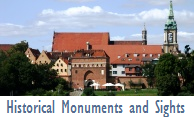
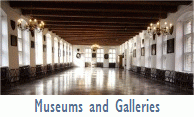
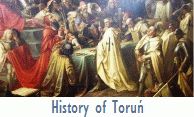
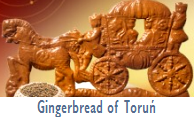
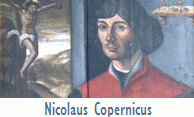


 Szafarnia
Szafarnia The hosts took a liking to young Chopin not only because of his reputation as a ‘prodigy’ or a ‘genius’, which he earned through his initial composition attempts and successful public performances in Warsaw, but also because of his social talents, vivid imagination and wit.
The hosts took a liking to young Chopin not only because of his reputation as a ‘prodigy’ or a ‘genius’, which he earned through his initial composition attempts and successful public performances in Warsaw, but also because of his social talents, vivid imagination and wit.  Toruń
Toruń
